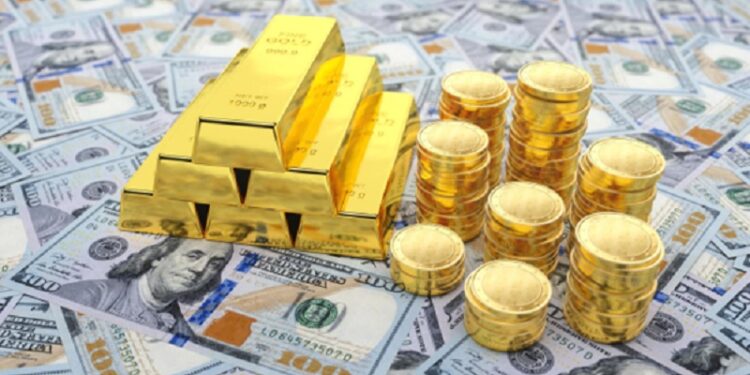Gold prices experienced a notable surge in low-volume Asian trade on Tuesday, breaking out of the trading range that persisted through most of December. This uptick in gold value was attributed to soft U.S. inflation data, intensifying speculation around the possibility of early interest rate cuts in 2024.
The precious metal had been on a strong upward trajectory in recent sessions, fueled by a weaker-than-expected reading on the PCE price index, the Federal Reserve’s preferred inflation gauge. This development, coupled with dovish signals from the Fed during its final meeting for 2023, has heightened expectations that the central bank may commence interest rate cuts as early as March 2024.
The anticipation of rate cuts presented a favorable outlook for gold, as high-interest rates typically elevate the opportunity cost of investing in bullion. Spot gold marked a 0.5% increase to reach $2,064.16 an ounce, while gold futures expiring in February rose 0.3% to $2,075.10 an ounce.
Breaking out of the $2,000 to $2,050 trading range that characterized most of December, spot gold is now trading less than $100 away from a record high of over $2,130 an ounce achieved at the beginning of the month.
The likelihood of rate cuts gained further strength following softer-than-expected PCE inflation data released on Friday. CME Group’s FedWatch tool revealed traders pricing in a more than 70% chance of a 25 basis point cut in March 2024. Goldman Sachs supported this sentiment, predicting that the central bank could follow a March cut with two more cuts in the first half of 2024, along with two additional cuts later in the year.
While some Fed officials cautioned against overly optimistic bets on early rate cuts, the dollar slid to a near five-month low on Tuesday, accompanied by a decline in Treasury yields. Gold reaped the benefits of this market movement.
In a broader economic context, the yellow metal may continue to benefit from worsening global economic conditions in the coming year, as the impacts of tight monetary policy are felt by major economies.
In the realm of industrial metals, copper prices also experienced a rise in Asian trade on Tuesday. Copper futures expiring in March increased by 0.4% to $3.9153 a pound, extending a recent positive trend. Support for copper came not only from a weakened dollar but also from optimistic expectations regarding demand in 2024, particularly in the electric vehicle sector. As the demand for electric vehicles continues to rise globally, copper, a vital component in batteries and electronics, stands to benefit.
Moreover, the outlook for copper in 2024 appears promising, with expectations of tightening supplies due to major mine closures in Panama and Peru. The red metal’s prospects remain upbeat amid positive market sentiment and increasing demand.










